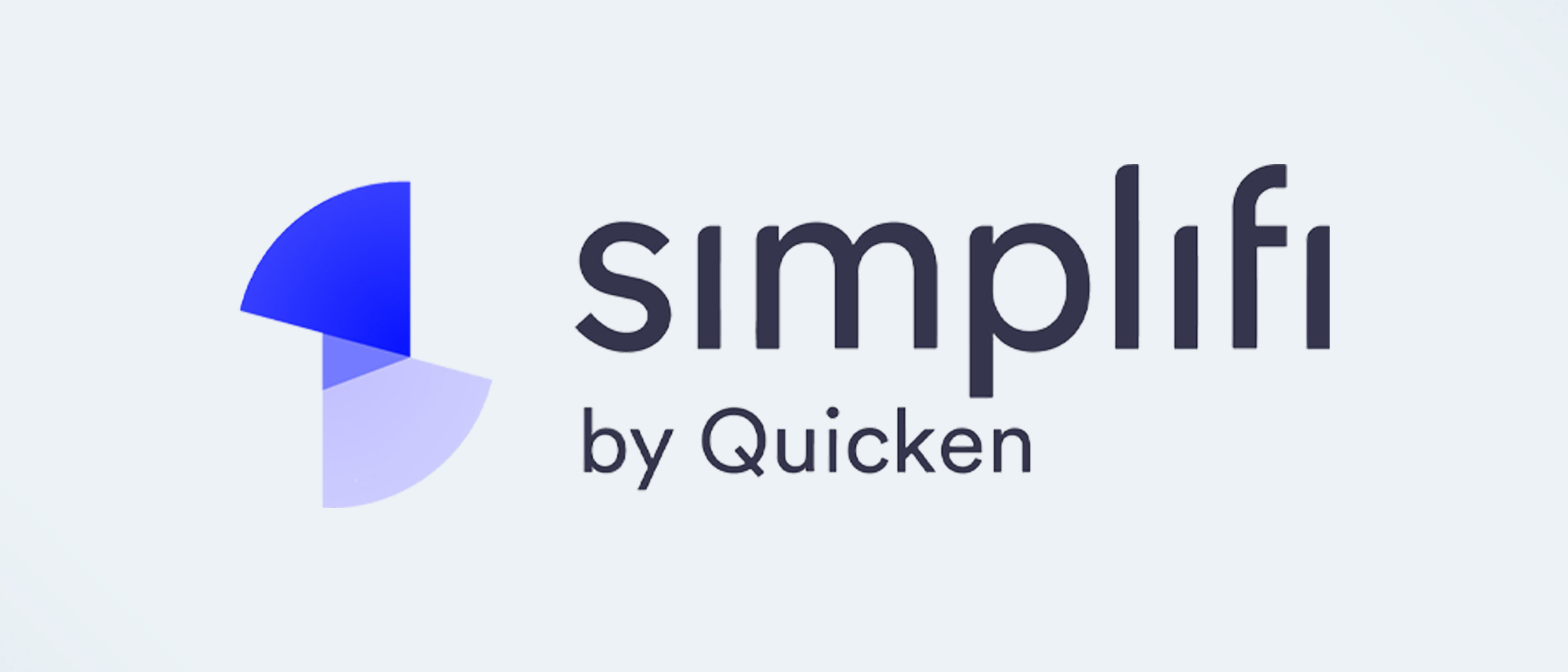Tom's Guide Verdict
An elegant interface and streamlined workflow that supports multiple budgeting methods distinguish this personal finance service.
Pros
- +
Visual, easy-to-navigate design
- +
Can handle four budgeting methods, including zero-sum
- +
Useful ways to watch how your spending, and your saving
Cons
- -
Some challenges with connecting accounts
- -
Lacks support for complex annual budgets or tax planning
Why you can trust Tom's Guide
Simplifi by Quicken is, as its name implies, a simplified approach to personal finance. This cloud-based service makes it easy to track your money and budget wherever you are.
Now owned by Aquiline Capital Partners, Simplifi comes from the same stewards of long-time stalwart Quicken. Whereas Quicken is a full-scale personal financial package with desktop applications and online/mobile support, Simplifi pares back to basics, and it does so with a fresh, visually appealing interface and logical workflow to tracking accounts, setting savings goals, and creating budgets. Read the rest of our Simplifi review to see why this is one of the best budget apps around.
Simplifi by Quicken review: Cost
Simplifi costs $5.99 monthly, and $3.99 per month billed annually ($47.99). The company offers a 30-day free trial, but you have to sign-up with a credit or debit card, or PayPal account.
Simplifi by Quicken review: Features
Simplifi by Quicken is designed to provide a visual snapshot of your financial health. The service handles account tracking across banks, investments, and credit cards and payment services, and combines this with spending and savings plans, bill alerts, and trends analysis of your spending, income, savings, and more. Unlike its well-known personal finance sibling Quicken, Simplifi began life as a web-first service, and its graphical look and feel reflect that history.
Simplifi’s features stack up well against Quicken’s Deluxe tier (the step-up from Quicken Starter Edition that costs $51.99 a year). Quicken distinguishes itself by having desktop software for Mac and PC in addition to its online and web apps; and Quicken has stronger support for tax planning and investments. Simplifi doesn’t support banks outside of the U.S.; it does support cryptocurrency investments with connections to Coinbase, Robinhood, and other wallets as well as manual data entry. In the future, Simplifi says it will track cryptocurrency transactions out to multiple decimal points.
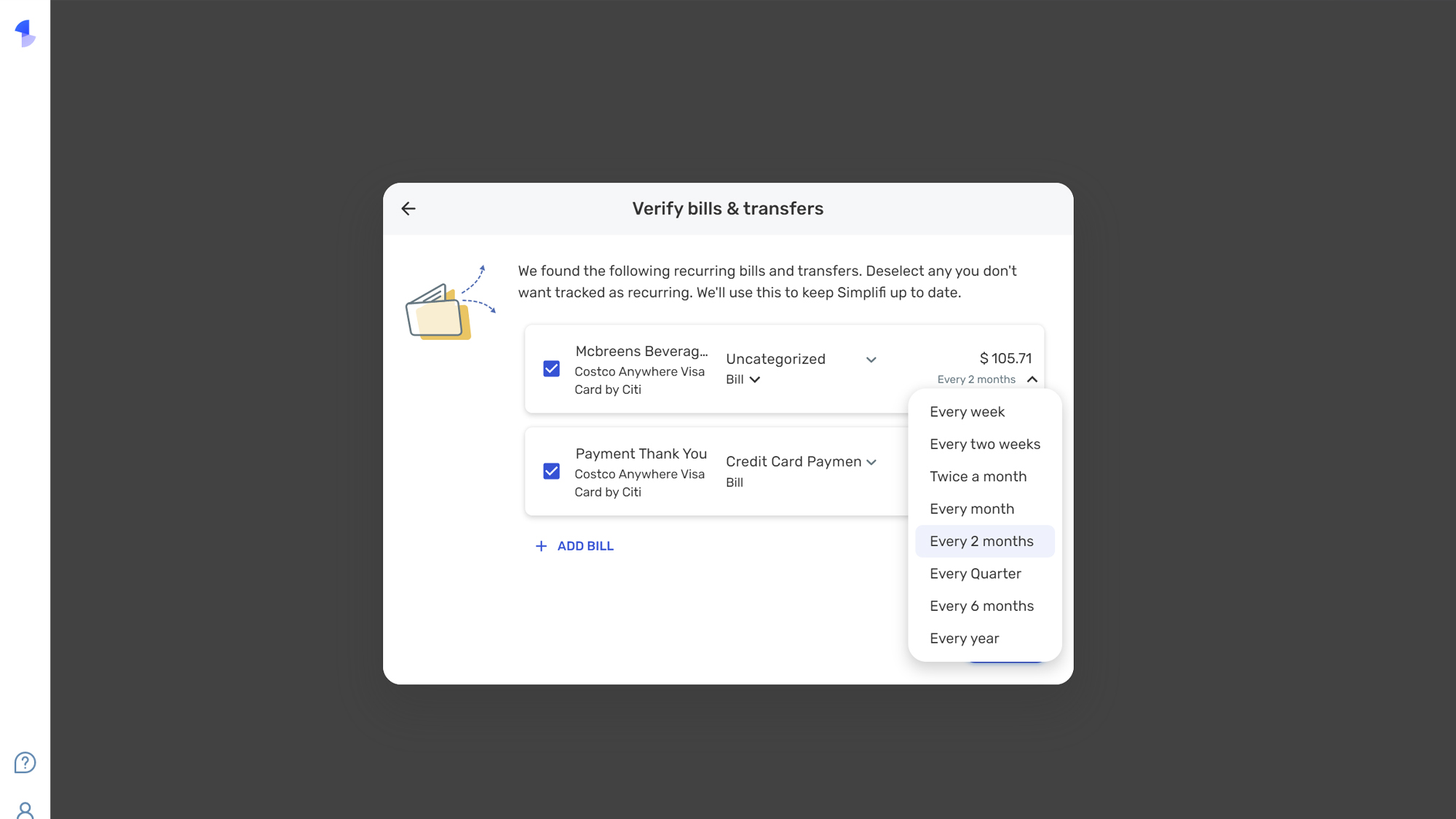
The Simplifi service has strong budgeting features, even though you won’t see the word budget anywhere in the interface. You can create a budget for a month, create watchlists to track how much you’re spending, and choose to ignore one-time transactions from a monthly spending plan (something Quicken can’t do). It can help with savings goals and make suggestions for your budget based on your spending, but it doesn’t create multiple budgets or rollover budgets, nor does it do year-long budgeting – all of which the more traditionally structured Quicken can handle.
Simplifi by Quicken review: Available Help
When you first log into the service, Simplifi has a guided tour that walks you through the sections. Additional guidance pops up when you first enter a section, as when we checked out the spending plan.
The right nav bar has a support icon; click the question mark and a chat and help pop-up appears at the right of the screen. We could search for more information on a topic, or initiate a conversation with the bot and then a live agent. The service has live chat support 8 am to 5 pm Pacific seven days a week. You can request phone support from the help center.
Simplifi by Quicken review: Ease of use
After you choose between a monthly or annual plan, you’ll set up an account log-in with your email address and provide payment information. Then you’ll add your cell-phone number and password, and that’s it – you’re in. Add your cell-phone number again to have the Android or iOS app link texted to you. And log-in again.
A welcome screen starts a basic onboarding process. The first verifies your name and zip code (pre-populated based on your billing information). Next you’ll connect accounts. As with Quicken supports more than 14,000 financial institutions; you can also add and manually track an asset or account.
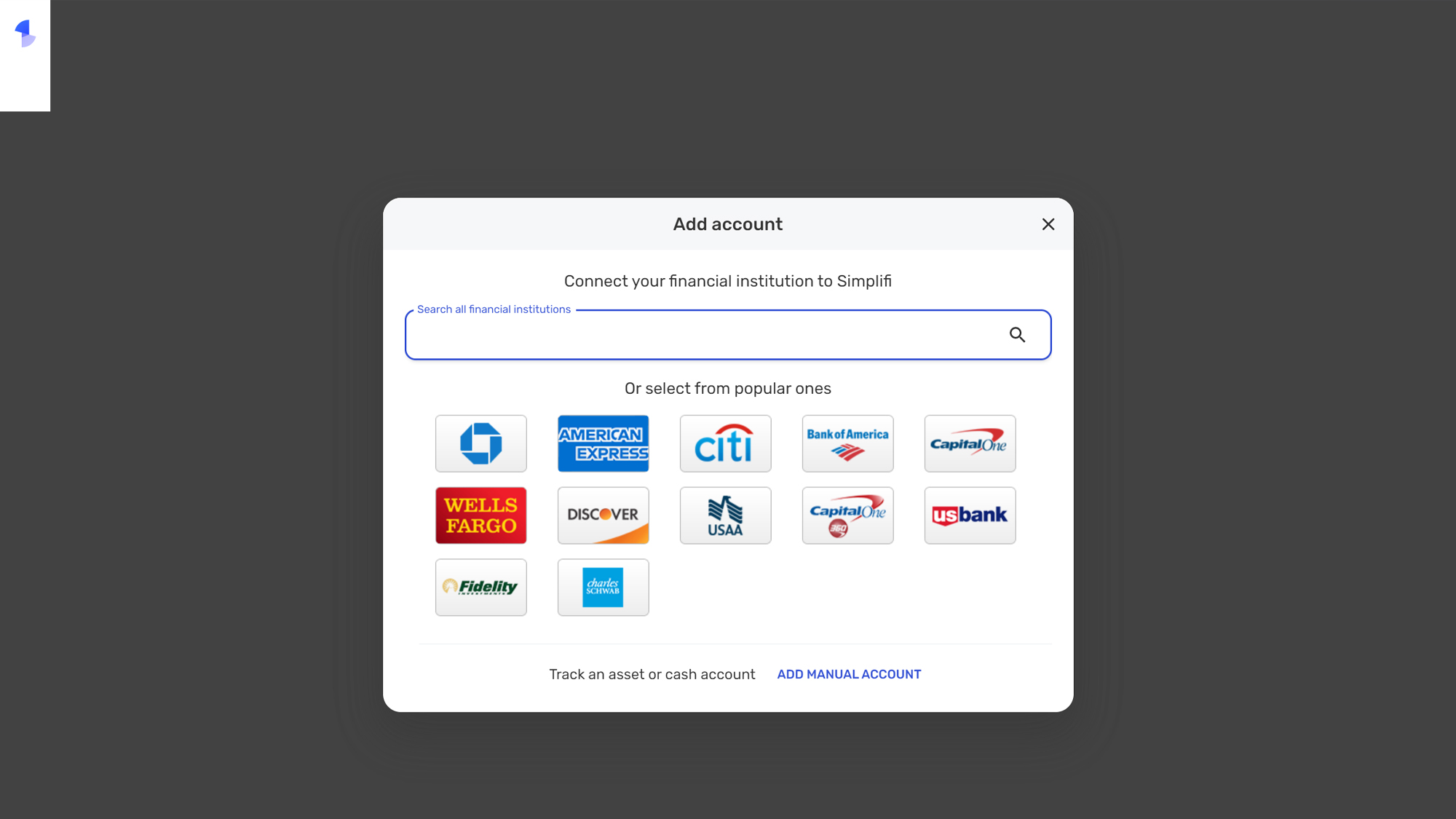
We had an issue getting an account recognized; Simplifi struggled with the two-factor authentication in conjunction with that banking institution. Eventually, Simplifi made a tweak on its end that fixed the problem. I next added accounts from other institutions with no problems. A drop-down lets you choose which accounts to add If you have multiple accounts at an institution.
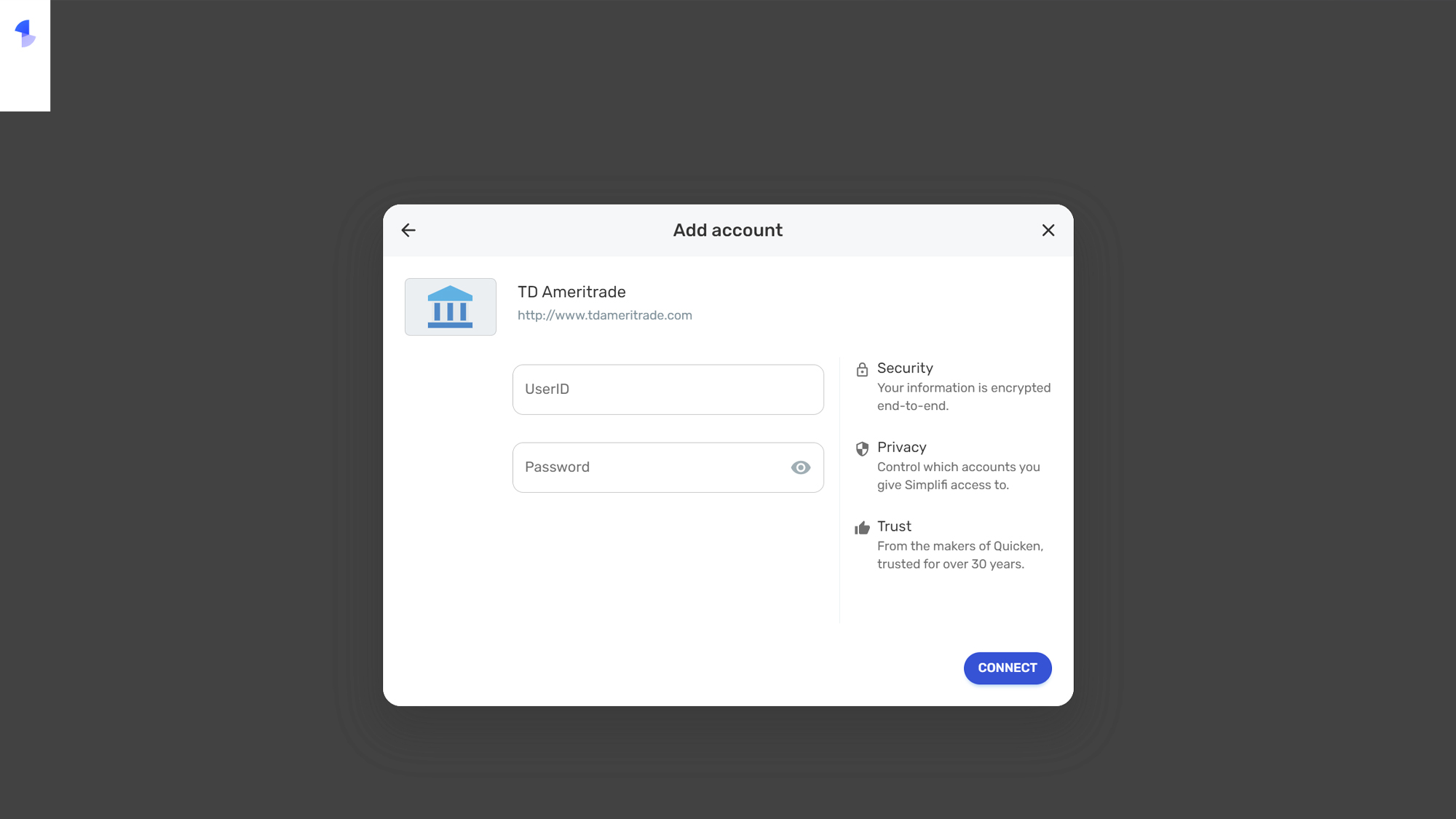
Once we added some accounts, Simplifi dropped us into the main dashboard (you can’t nose around the service without adding at least one account). The default view is an eye-catching dashboard of cards showing snapshots of data culled from the different sections of the service. Upon first use, the service walked us through a quick tour of the interface.
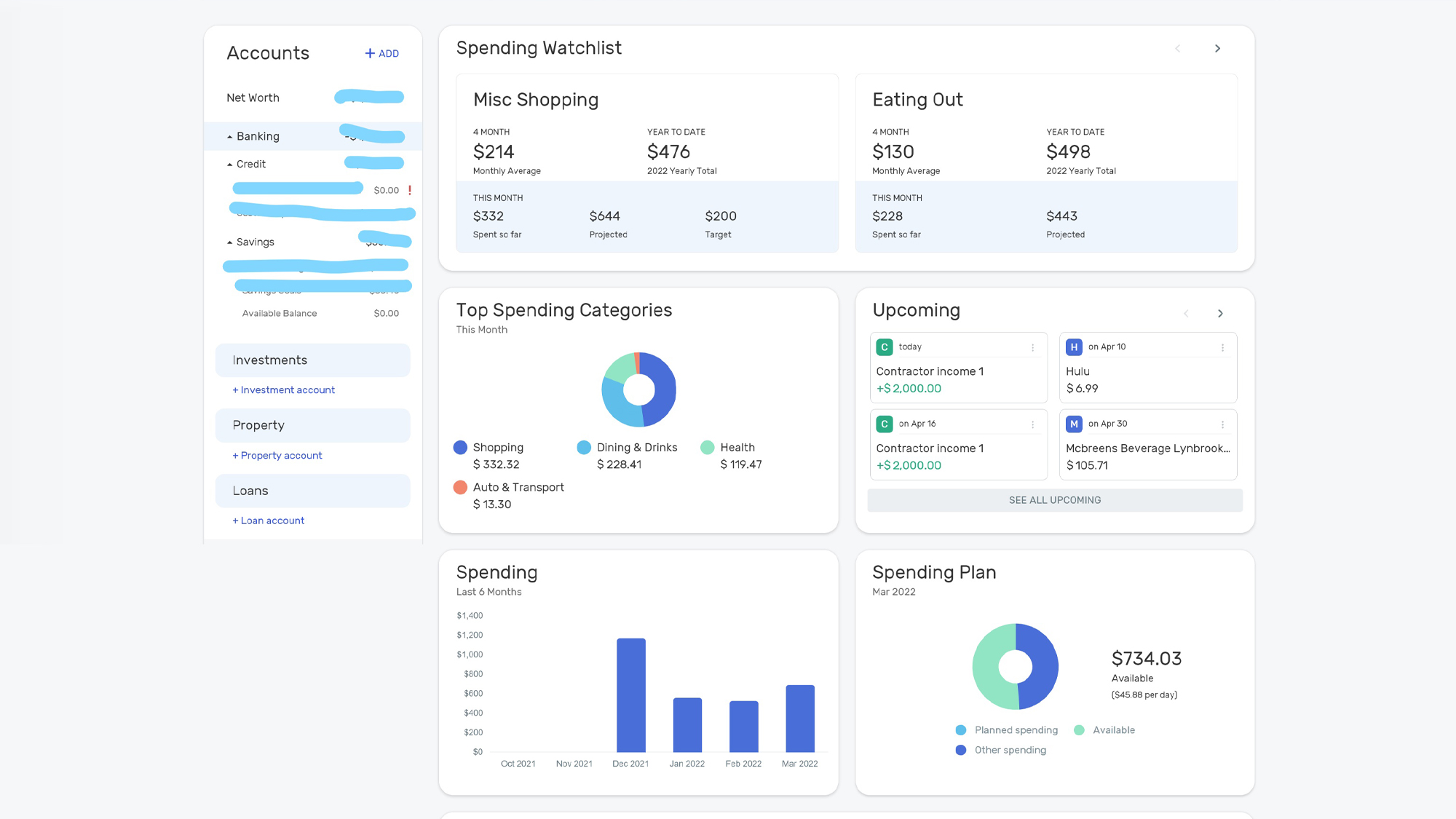
We liked how we could customize Simplifi’s interface to meet our needs and preferences. For example, we could reorder the cards on the dashboard, change tags, and set rules and filters to add layers of flexibility beyond Simplifi’s own machine learning intelligence. We also liked that Simplifi gave us guidance from within the service, something competitors like YNAB lack.
As with the interface, Simplifi’s budgeting abilities have a degree of flexibility. The term “budget” is not seen anywhere in the interface; instead, Simplifi has natural language and workflow that effectively translates into creating a budget by completing the previous steps. Instead of setting a “budget” for a category as in Mint, you set a Watchlist to track how much you’re spending on a particular category.
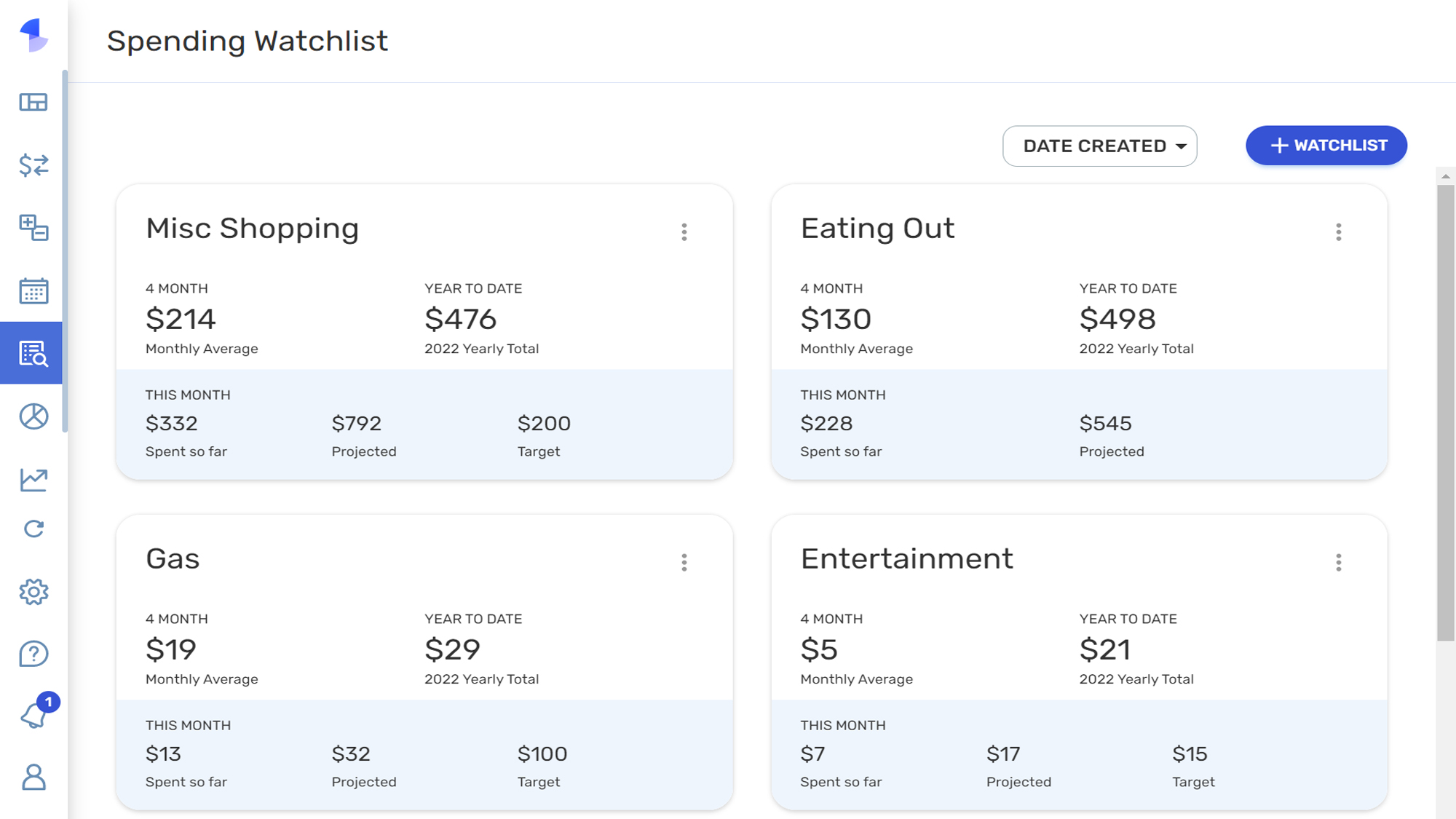
The service’s help options have useful budgeting tip entries to help you understand how to use Simplifi’s tools to your advantage. Simplifi is unusual in that it not only works across multiple budgeting approaches, but it also outlines how it can be used across four styles of budgeting: zero-based, envelope-style, pay-yourself-first, and 50/30/20.
Your budget comes together under Simplifi’s Spending Plan. Simplifi analyzes your recurring transactions based on your accounts to identify your available funds based on what’s left of your income after both your paid and expected bills and your savings. You can manually add income and spending events, add tags and categorization as relevant. This approach makes budgeting more intuitive and flexible than on other services.
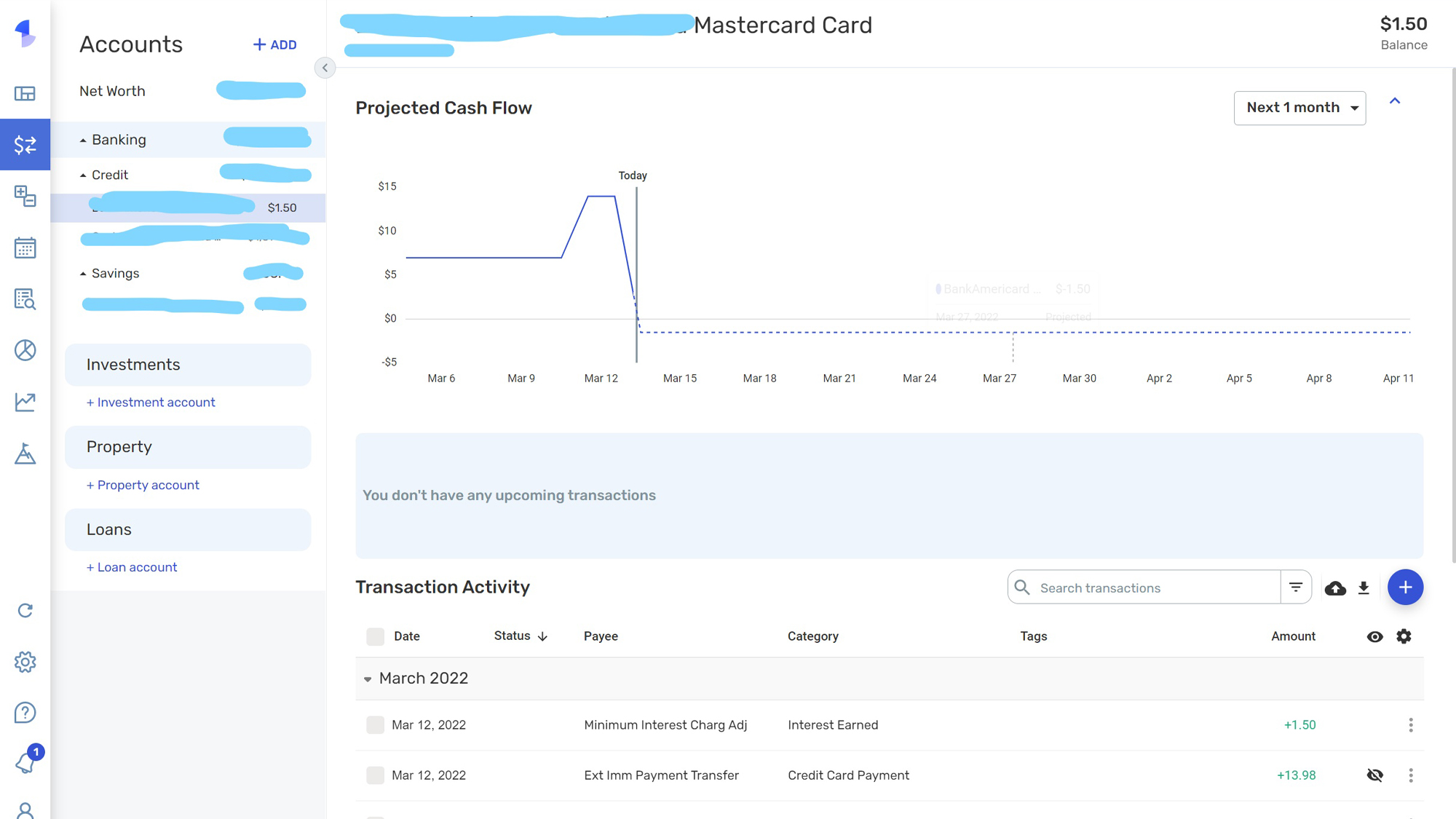
For the most part, we found Simplifi’s tools for watching expenses and reporting your financial health logically laid out and easy to navigate. We found the Watchlist approach an appealing method to keep an eye on spending, based on category, payee, or tag. In turn, this feature made it easy to track our coffee expenses, takeout dinners, and grocery shopping. Setting savings goals for savings provides simple, easy visuals that help you get to your target by your intended date.
The biggest interface obstacle we encountered was when we were manually adding income not represented in our accounts. The manual add form is actually the same across categories, but oddly the category for income falls under a drop-down, while “uncategorized” leaves only Bills or Subscriptions as check boxes below, outside of that drop down. Once we selected “Personal Income” under the category drop down did the context of the available “type” of the funds being added change.
Simplifi by Quicken review: Mobile
Like the web-based service, the Simplifi mobile app for iOS and Android is highly customizable. By default, the banking card sits up top, so you can view your funds at a glance, but you can rearrange the remaining cards as you like. A hamburger menu at the top left reveals each section, making navigation among elements simple and just a few taps.
The presentation is gorgeous and uncluttered, with easy to read text, useful graphics, and logical organization. The functionality follows what you get on a web browser, just in a more condensed form designed for a phone’s vertical screen.
Simplifi by Quicken review: Verdict
With its elegant design and flexible approach, Simplifi by Quicken makes it appealing to monitor your money, and delivers reports that help you stay on top of your finances. We especially liked the logical flow of how budgeting could work, how we could monitor how much we were spending on specific categories, and how we could set savings goals. The service costs $5.99 per month, making it a dollar more than Mint Premium on iOS, and $4 more than the ad-free Mint service. .
Simplifi and Mint are more closely similar than dissimilar in that they look at a wide swath of your financial picture, and budgets are one component within that that use the account monitoring you’ve already entered. While YNAB is the best app that’s focused solely on budgeting, YNAB also only allows for zero-based budgeting and nothing more. If you’re looking for more elastic options for watching your spend along with robust net worth and account monitoring features, Simplifi is the better option.
Melissa Perenson is a freelance writer. She has reviewed the best tax software for Tom's Guide for several years, and has also tested out fax software, among other things. She spent more than a decade at PC World and TechHive, and she has freelanced for numerous publications including Computer Shopper, TechRadar and Consumers Digest.
